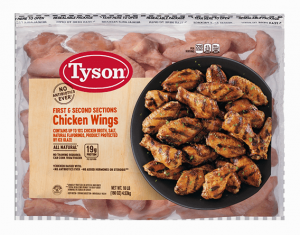A number of meat packing plants temporarily shuttered in the United States by companies coping with novel coronavirus-related production problems have resumed limited capacity operations. Among them are the Smithfield Foods pork processing facility in Sioux Falls, South Dakota, the Tyson Foods pork plant in Logansport, Indiana, and a Tyson beef facility in Pasco, Washington. Furthermore, the JBS USA pork packing unit in Worthington, Minnesota, is set for a partial reopening on May 6.
According to a report issued by the Atlanta, Georgia-headquartered Centers for Disease Control (CDC) on May 1, over 4,900 workers at meat and poultry processing facilities in the USA have been diagnosed with the coronavirus (SARS-CoV-2), including 20 who died from Covid-19 respiratory disease caused by the contagion.
With the steady meat supply to consumers potentially under threat of disruption, last week President Donald J. Trump invoked the Defense Production Act to designate meat processing plants in the United States as “critical infrastructure” during the duration of the coronavirus pandemic. The executive order provides additional liability protection to packers that remain open during the health crisis.
All voluntarily closed plants that have reopened were thoroughly sanitized when shut down. In an effort to guard against future Covid-19 outbreaks, returning workers undergo body temperature checks and are screened for other indications of coronavirus infection as well as for personal hygiene compliance. Employees are required to wear facemasks, and the Smithfield facility has installed production line dividers to assure physical distancing of six feet or more.
“We’ve taken additional precautions to reassure team members that they are returning to a safe work environment and have made additional changes to continue supporting them during this global health crisis,” said Todd Neff, Tyson Foods’ senior vice president for pork.
“While our Logansport facility was idled, we added more workstation barriers, installed more hand sanitizer dispensers, and did additional deep cleaning and sanitation. We’re also now screening employees for additional symptoms and designating monitors to help enforce social distancing.”
In addition, the Logansport facility is the first of several Tyson plants to receive a mobile health clinic, operated by Matrix Medical Network, to provide community-based services ranging from diagnostic (PCR) testing for Covid-19, assist with the environmental design of the facility to mitigate the risk of the virus spread, as well as conduct daily on-site clinical screening.

The company has doubled its bonus for employees. Worker who cannot come to the plant due to illness or childcare obligations will continue to qualify, but bonus eligibility will depend on attendance. Tyson also increased short-term disability coverage to 90% of normal pay until June 30 to encourage team members to stay home when they are sick.
“The health and wellbeing of our team members remains our top priority as we fulfill our critical role feeding the world in these uncertain times,” said Noel White, chief executive officer of Tyson Foods. “We have instituted safeguards that meet or exceed CDC and OSHA guidelines at all our facilities to protect our teams and keep our workers, families and communities safe.”
White’s statement was made on May 4, as the Springdale, Arkansas-headquartered company reported second quarter 2020 results (receipts of $10,888 million) and delivered record sales ($21,703 million) and beef results (6.6% operating margin) for the first six months of the fiscal year.
“During the quarter, we witnessed an unprecedented shift in demand from foodservice to retail, temporary plant closures, reduced team member attendance, and supply chain volatility as a result of the virus. Despite these challenges, we were able to adjust our product mix and redirect products to the appropriate channels,” said White.

The CEO continued: “While we cannot anticipate how long the challenges presented by Covid-19 will persist, we remain focused on driving long-term growth. Our solid balance sheet, ample liquidity, scale and diversity continue to give us confidence in our long-term outlook.”
Beef Segment Results
Sales volume in the beef increased in the second quarter of fiscal 2020, but decreased for the first six months of fiscal 2020 due to a reduction in live cattle harvest capacity as a result of a fire that caused the temporary closure of a production facility for the majority of the first quarter of fiscal 2020. Average sales price was relatively flat in the second quarter of fiscal 2020 and increased in the first six months of fiscal 2020 as beef demand remained strong.
Operating income in Q2 decreased as the result of volatile market conditions, increased operating costs and approximately $55 million of derivative losses. Operating income in the first six months of fiscal 2020 increased as the company continued to maximize revenues relative to live fed cattle costs, partially offset by increased operating costs, derivative losses and $16 million of net incremental costs from a production facility fire.
Pork
Sales volume increased in the second quarter and first six months of fiscal 2020 due to increased domestic availability of live hogs and strong demand for pork products, especially in the consumer products and export sales channels during the second quarter. Average sales price increased in the second quarter and first six months of fiscal 2020 associated with higher livestock costs and stronger export markets.
Operating income was relatively flat in the second quarter and increased in the first six months of 2020 as revenues were maximized relative to the live hog markets, partially attributable to favorable export markets and improved operational performance, which were slightly offset by higher operating costs.
Chicken
Sales volume decreased during Q2 due to lower volume from Tyson’s rendering and blending business. Sales volume increased in the first six months of fiscal 2020 primarily due to incremental volume from a business acquisition in the first quarter of fiscal 2019, partially offset by lower volume from our rendering and blending business.

Average sales price increased in the second quarter and first six months of fiscal 2020 due to lower rendering and blending sales, which carry a lower average sales price, largely offset by broadly weaker chicken pricing as a result of market conditions.
Operating income decreased in the second quarter and first six months of fiscal 2020 primarily from challenging pricing conditions and an approximately $40 million increase in net feed ingredient costs and derivative losses in addition to $21 million in restructuring costs incurred in the first six months of fiscal 2020.
Prepared Foods
Sales volume was flat for the second quarter but decreased for the first six months of fiscal 2020 as growth in volume across the consumer products channel was offset by a reduction in the foodservice channel and other intra-segment sales channel shifts. Average sales price increased in Q2 and the first six months of fiscal 2020 due to favorable product mix and the pass through of increased raw material costs.

Operating income decreased primarily due to increased operating costs, including $65 million and $125 million increases in net raw material costs and derivative losses in the second quarter and first six months of fiscal 2020, respectively. Additionally, operating income was impacted by $22 million restructuring costs incurred in the first six months of fiscal 2020.
Outlook
For fiscal 2020, the United States Department of Agriculture (USDA) forecasts domestic protein production (beef, pork, chicken and turkey) should increase approximately 3-4% from fiscal 2019 levels, but it is expected that export markets will absorb much of the increased output.
The following is a summary of the outlook for each of the market segments in which Tyson operates, as well as an outlook for capital expenditures, net interest expense, liquidity and tax rate for fiscal 2020. While the accounting cycle results in a 53-week year in fiscal 2020 as compared to a 52-week year in fiscal 2019, the fiscal 2020 outlook is based on a comparable 52-week year.
Covid-19: The company continues to proactively manage operations through this global pandemic. Given the nature its business, demand for food and protein may shift among sales channels and experience short-term disruptions, but over time it is anticipated that worldwide demand will continue to increase. Multiple challenges related to the pandemic are being experienced, which will likely increase operating costs and negatively impact volumes for the remainder of fiscal 2020.
Operationally, Tyson has and expects to continue to face slowdowns and temporary idling of production facilities due to labor shortages or choices made to ensure operational safety. The lower levels of productivity and higher costs of production thus far experienced will likely continue in the short term until the effects of Covid-19 diminish.
Each of the company’s segments has also experienced a shift in demand from foodservice to retail; however, the volume increases in retail have not been sufficient to offset the losses in foodservice and as a result, decreases in volumes are expected in the second half of fiscal 2020. It is not possible to currently predict the ultimate impact that the coronavirus disruption will have on short- and long-term demand at this time, as it will depend on, among other things, the severity and duration of the health crisis.
Tyson’s liquidity is expected to be adequate to continue to run operations and meet obligations as they become due. Due to the uncertainty of the Covid-19 impacts to operations, it is not possible now to provide segment adjusted operating margin guidance.
Beef: The company expects industry fed cattle supplies to increase approximately 2% in fiscal 2020 as compared to fiscal 2019. For the remainder of fiscal 2020, ample supplies should be available in regions where Tyson operates plants and profitability should remain strong.
Pork: Industry hog supplies are expected to increase approximately 5% in fiscal 2020 as compared to fiscal 2019. For the remainder of this fiscal year, the forecast is for decreased livestock costs as compared to the same period in fiscal 2019 and export markets to become more available.
Chicken: USDA projects a 3-4% increase in chicken production in fiscal 2020 as compared to fiscal 2019. However, more recent data indicates that chicken production for the remainder of fiscal 2020 will be lower than those projections. For the remainder of this fiscal year, it is not anticipated that pricing will improve, nor does Tyson expect increased demand in consumer products to completely offset the expected decrease in foodservice business.
Prepared Foods: The company anticipates some Covid-19-related disruptions in the availability of raw materials. Additionally, it is expected that overall raw material costs will decrease through the remainder of fiscal 2020 as compared to the same period the year prior. For the remainder of fiscal 2020, it is believed that increased retail sales will reduce the impact of lower foodservice demand.

International/Other: This sector primarily includes foreign operations in Asia-Pacific, China-Korea and Europe, third-party merger and integration costs and corporate overhead related to Tyson New Ventures, LLC. The company expects the improved results from foreign operations in the first six months of fiscal 2020 to be challenged in the back half of the year due to market conditions associated with Covid-19.
Capital Expenditures: For fiscal 2020, Tyson expects capital expenditures to be approximately $1.2 billion. They will include spending for production growth, safety, animal wellbeing, infrastructure replacements and upgrades, and operational improvements that are expected to result in production and labor efficiencies, yield improvements and sales channel flexibility.
Net Interest Expense, Liquidity and Tax: The company anticipates net interest expense to approximate $470 million for fiscal 2020. Total liquidity, which was approximately $2.5 billion on March 28, 2020, will remain above the minimum liquidity target of $1.0 billion. The adjusted effective tax rate is expected to be around 23% in fiscal 2020.





